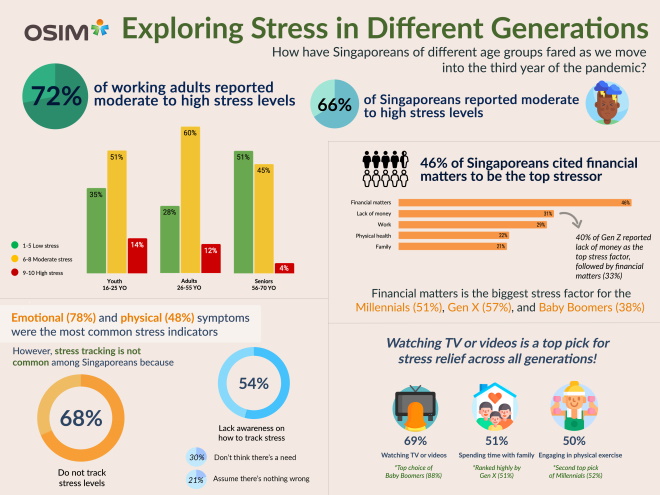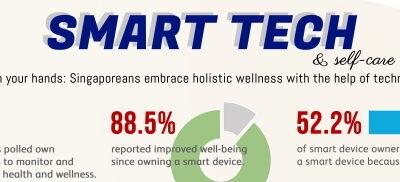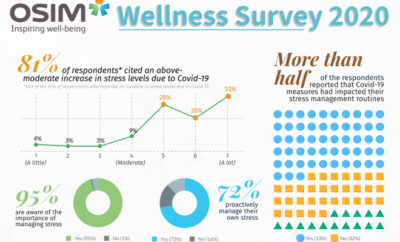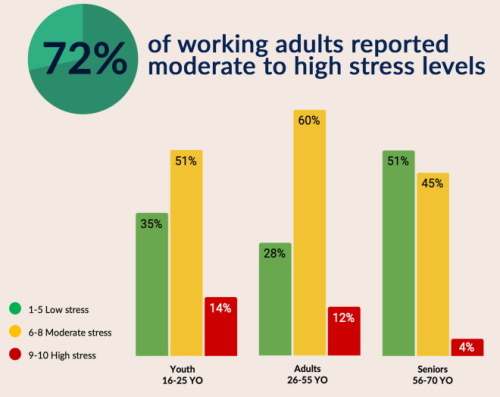
The Gen XY Lifestyle
Work, financial matters and lack of money lead to increased stress levels
72 percent of working adults between the ages of 24 and 55 report moderate to high stress levels over past year
The OSIM Wellness Survey – now into its third year – approached 432 respondents between the ages of 16 to 70 to examine stress levels and coping mechanisms amongst Singaporeans.
The survey found that 2 out of 3 respondents indicated they experience moderate to high stress levels. Amongst the different age groups that took part in the survey, 72 percent of working adults between the ages of 24 and 55 reported moderate levels of stress. 65 percent of youth aged 16 to 25 years, and 49 percent of seniors aged 56 to 70 years reported moderate to high stress levels.
Work, financial matters and a lack of money were cited as part of the top five stressors for all age groups. Specifically, financial matters were the biggest source of stress for Millennials (51 percent), Gen X (57 percent) and Baby Boomers (38 percent).
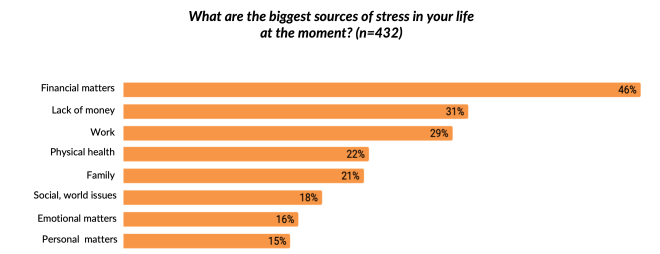
Do the individuals know that they are stressed, and how do they know?
The most common stress indicators among respondents were emotional (78 percent) followed by physical (46 percent). Emotional indicators include feeling anxious, edgy, or depressed, and physical indicators include experiencing headaches or lethargy.
The survey discovered despite the proliferation and usage of digital devices, few respondents indicated they used digital devices to track or manage their stress levels.
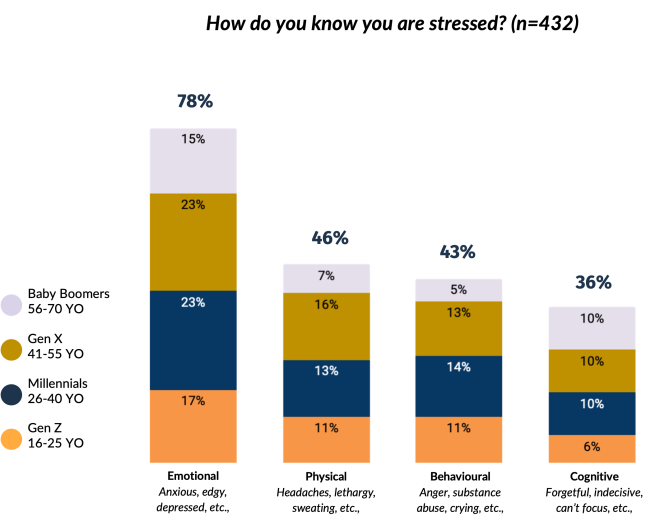
One out of three respondents shared that they were actively tracking or managing stress. While only a quarter of respondents reported utilising dedicated tools such as health trackers, wearables, or other smart devices. Out of the 68 percent of respondents who do not track their stress levels, 64 percent stated that this was due a lack of knowledge that there are such devices on the market, designed to help with measuring of one’s stress levels.
Today, we have access to technology and data at our fingertips, and it is possible to definitively measure and monitor physical indicators of stress, and even quantify our stress levels, instead of just basing it on feelings. We hope to encourage more people to make use of such devices and technology to have a better and clearer understanding of their own well-being, such that stress management can become more data-driven and precise, and form an integral part of their health and wellness routines.
Ms Lynn Tan, Deputy CEO of OSIM International
Digital devices can both induce and reduce stress levels
The survey found that the use of devices as stress relief has increased since the beginning of the pandemic. It also looked at how digital devices have had an impact on participants’ mental health and stress levels, as they live and work in a digital age.
The survey found that the use of digital devices for stress relief increased by 11 percent over the past two years, from 58 percent to 69 percent.
As a means of stress relief and well-being management, entertainment platforms such as video streaming services and social media are a common outlet for individuals.
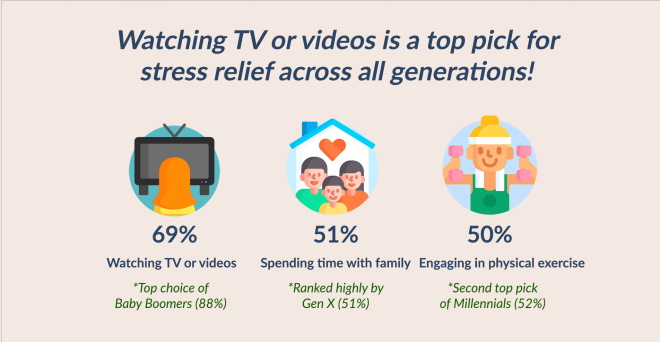
“Watching TV or videos” was the preferred mode of stress relief across all age groups. More than 60 percent of all respondents watched TV or videos, with those aged between 56-70 years old reporting the highest figure at 88 percent. Almost half of both Gen Z and Millennials coped with stress by using social media. 21 percent of Millennials cited social media as a key source of stress.
While excessive screen time and the use of digital devices may be associated with a range of negative mental health outcomes, mindful and regulated use of digital devices has also been linked with improved well-being.
Images and infographics provided by OSIM
Full infographic:
